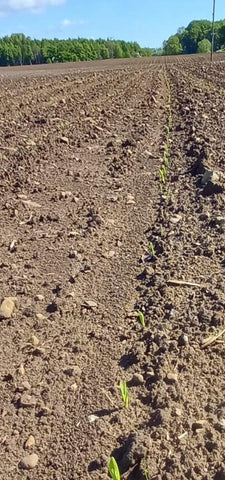What To Do Before Planting Seeds
Before racing ahead to plant your seeds, it is important to ensure that your soil is properly planned and prepared.
The first step to growing a flourishing and healthy garden is understanding your soil type. From there, you can decide which tools you will need to prepare your space and how you will use it.
Preparing Your Soil

To give your seeds the best chance of healthy growth, you must ensure that your soil is ready. Start preparations by loosening the soil, either with handheld tools or machinery. This is an important step in maintaining healthy plants as it allows water, air and nutrients to reach your seeds.
When cultivating your soil, keep an eye out for anything that may hinder the growth of your seeds. This includes weeds, rocks and thatch. Don’t forget to remove the entire root of pesky plants to stop them from growing back!
The last task in preparing your soil is to water it. There is a fine line between overwatering and underwatering, so understanding your soil type is essential. Healthy soil should be about 25% water, but other factors such as climate should be taken into consideration.
Finally, leave your soil to rest and then you’re ready to plant!
Handy Tools
Using a range of tools can help to make maintaining your garden a lot easier. These vary from simple handheld devices to High-Tec machinery. The type of tools you choose depends on your garden and the function that it serves.
Spades, forks and shovels are all must-haves when it comes to preparing your soil. Each have their own set of skills varying from digging and turning to lifting and aerating. Keeping these on hand can ensure that your soil will always be well looked after.
For larger areas of land, you may want to rely on machines. A rotovator is a useful tool for cultivating your soil. They are easy to handle and manoeuvre and allow you to adjust the depth of cultivation to cater to your needs. These machines are costly; however, many choose to rent the device.
What Is the Function of Your Garden?
Your gardening approach will be determined by your goals. Depending on the function of your area, you will need to consider new techniques and seeds. Begin by asking yourself what you want in a garden.
If you intend to use your garden as a social area, you will want to use products that are fast-growing and easy to maintain to keep your garden looking good. Our Easy Care Lawn seeds are perfect for this!
Hard wearing and tough seeds, such as our Pro Lawn Seeds, are brilliant for gardens that are built for sports and playing.
Understanding Your Soil Type
Learning about the important properties of soil can help you to maintain its health. There are 4 main properties that you must consider, including texture and composition, drainage, fertility, and pH.
Oftentimes, people underestimate the effect that pH levels can have on your soil health. Soil can be naturally acid or alkaline, so it is important to work it out before you start planting. If the pH level is not neutral, then the amounts of nutrients and chemicals that are soluble in water will be affected.
The correct balance is a pH between 5.5 and 7.5.
You can improve soil pH levels by adding lime (ground limestone) it is most likely that Calcium (Ca) lime is the best type. Magnesium (Mg) lime is also available, but adding too much Mg lime could be problematic with soil structure and chemistry.
If you can keep the soil pH within the guideline range, then plants can germinate and grow correctly. Additionally the nutrients within the soil and any feeds you add, can be held within the soil profile and utilised within the plants (when needed). It is vital to monitor soil pH and fertility on a frequent basis.
Find the Best Solutions with Grass Science Seeds
Here at Grass Science Seeds, we are happy to be offering the highest quality garden products. If you’re ready to get planting, check out the seeds we have on offer today!

